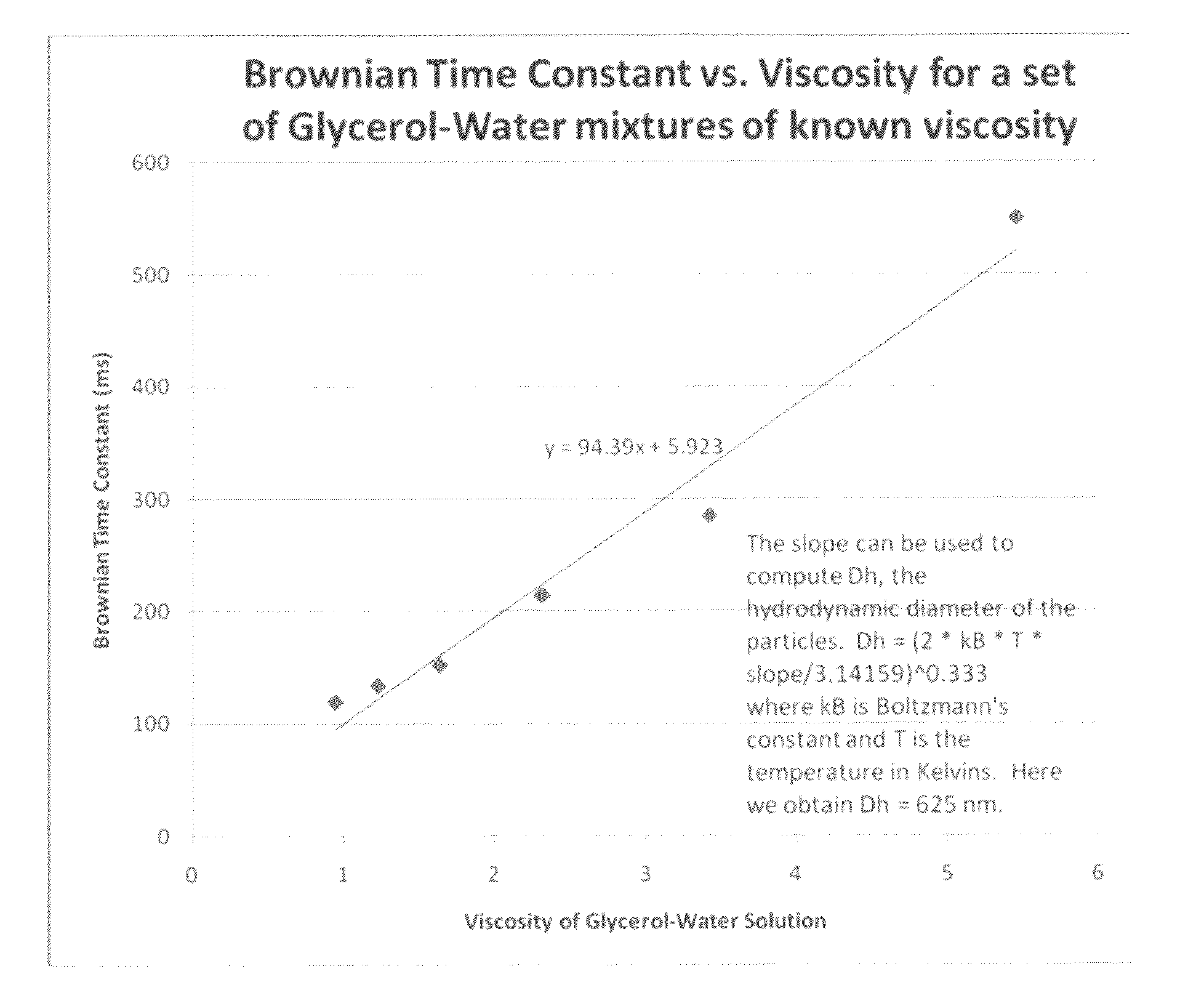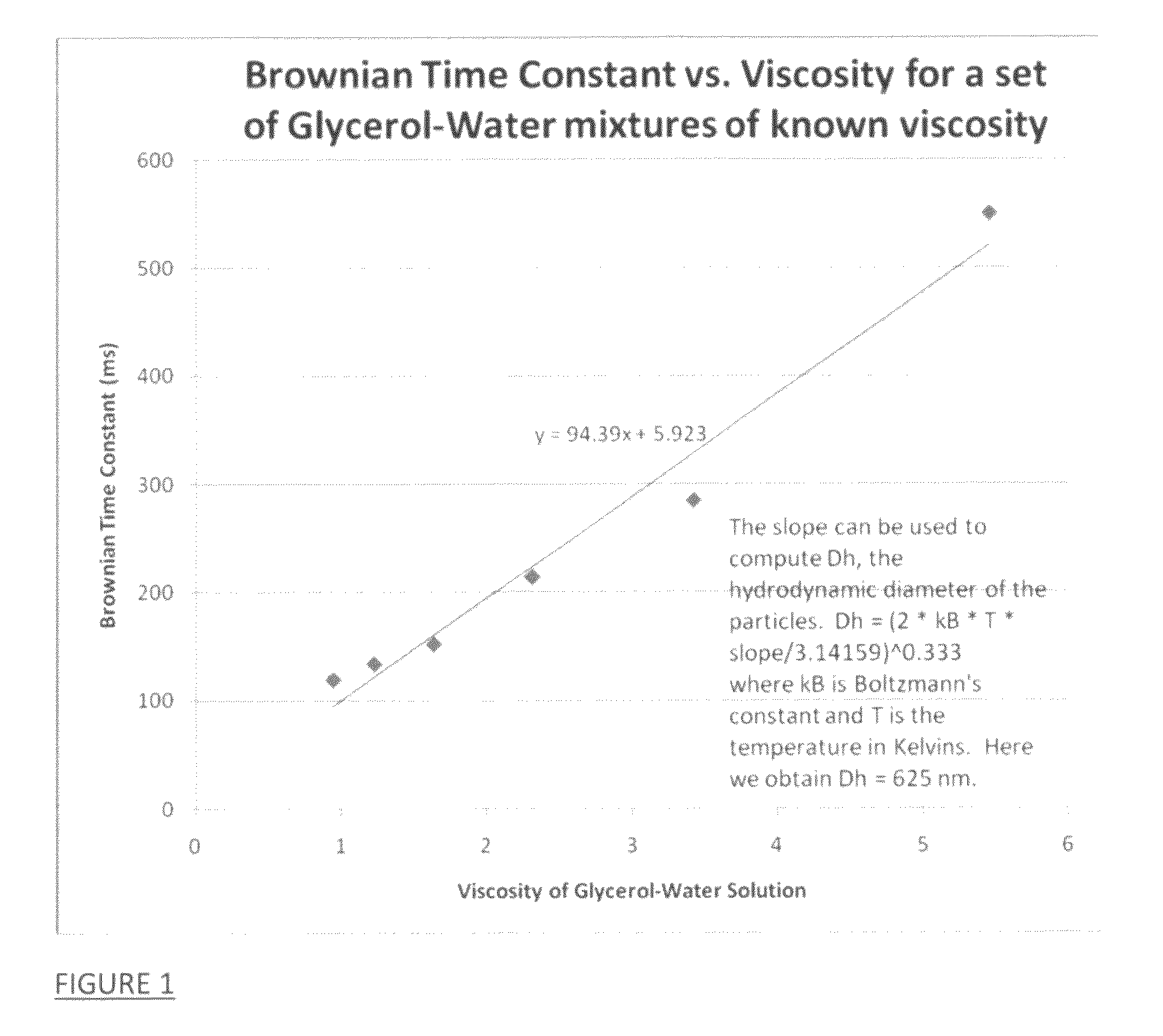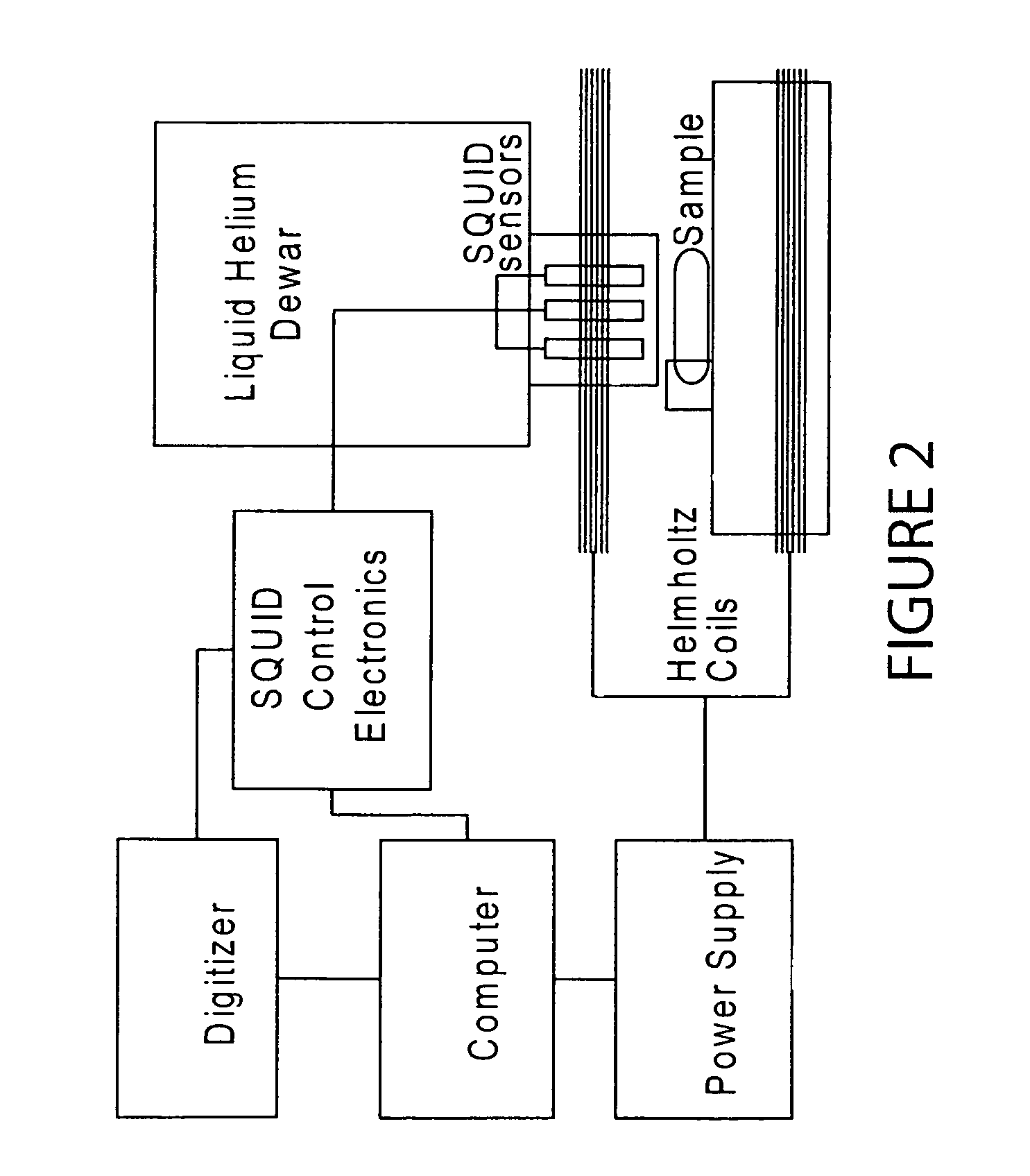Viscosity measuring method
- Summary
- Abstract
- Description
- Claims
- Application Information
AI Technical Summary
Benefits of technology
Problems solved by technology
Method used
Image
Examples
example 1
Viscosity Determination
[0034]An illustrative method embodying steps 1, 2, and 3 above for a calibration fluid was conducted using a set of water / glycerol mixtures of known composition (and therefore known viscosity), as shown in FIG. 1. For the data below and in FIG. 1, the water-glycerol mixtures were prepared by a formula to give a particular set of viscosity values (plotted against the x-axis below).
[0035]In this Example, the Brownian time constant (decay constant) was measured using the equipment schematically shown in FIG. 2 using a SQUID sensor to measure the relaxation time constant of commercially-available FluidMAG CMX magnetic composite nanoparticles of nominal 200 nm overall hydrodynamic diameter (per vendor information) in the glycerol-water mixtures, and correcting for the Neel relaxation contribution by obtaining the Neel time constant from nanoparticles dried on a cotton swab. tauN=approximately 91 ms. The FluidMAG CMX magnetic composite nanoparticles are commercially...
example 2
Preferred Relaxometry Test
[0036]In a preferred embodiment of the present invention, the magnetic nanoparticles are chosen in a manner to substantially reduce or eliminate the Neel relaxation effects on the relaxometry measurement. As a result, there will be no correction for the Neel relaxation component, as all viscosity probe nanoparticles will have a Neel relaxation time constant much longer than the measurement timescale (i.e. their magnetic relaxation will be “blocked”). In other words, it is preferred to use nearly monodisperse particles that are all “blocked” to eliminate Neel relaxation at the measurement temperature. Therefore these nanoparticles would only exhibit detectable relaxation that is caused by Brownian rotational motion, which depends on hydrodymic diameter and viscosity. In this preferred embodiment, the measured relaxation times tauS and tauW would be equal to the Brownian time constants without any need for a Neel correction factor. That is, for “blocked” part...
example 3
Hydrodynamic Particle Size Determination
[0038]The present invention envisions in another illustrative embodiment a method for determining the distribution of hydrodynamic sizes of an ensemble of magnetic nanoparticles that are introduced in a substantially homogenous “control” fluid, such as the de-ionized water calibration fluid described above, if the magnetic nanoparticles are all magnetically “blocked” at the measurement temperature as also described above.
[0039]Using steps similar those embodied in Step 3b above, the magnetic relaxometry measurement would simultaneously provide a plurality of B vs. t decay curves wherein the number of component curves would depend on the hydrodynamic particle size distribution. From a single measured B vs. t curve (the sum of the component curves), a plurality of exponential time constants (decay constants) can be determined. Obtainment of the distribution of hydrodynamic sizes involves inverting the relaxation curves using an inverse Laplace t...
PUM
| Property | Measurement | Unit |
|---|---|---|
| hydrodynamic diameter | aaaaa | aaaaa |
| hydrodynamic diameter | aaaaa | aaaaa |
| diameter | aaaaa | aaaaa |
Abstract
Description
Claims
Application Information
 Login to View More
Login to View More - R&D
- Intellectual Property
- Life Sciences
- Materials
- Tech Scout
- Unparalleled Data Quality
- Higher Quality Content
- 60% Fewer Hallucinations
Browse by: Latest US Patents, China's latest patents, Technical Efficacy Thesaurus, Application Domain, Technology Topic, Popular Technical Reports.
© 2025 PatSnap. All rights reserved.Legal|Privacy policy|Modern Slavery Act Transparency Statement|Sitemap|About US| Contact US: help@patsnap.com



